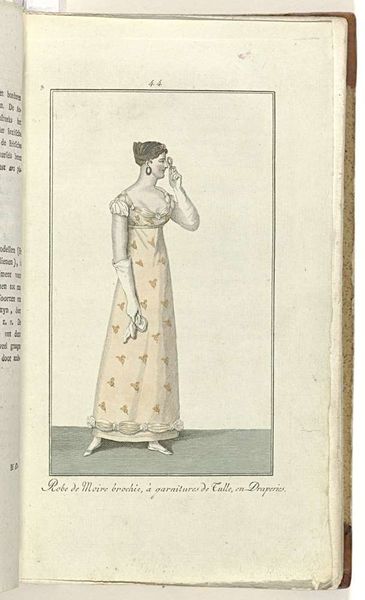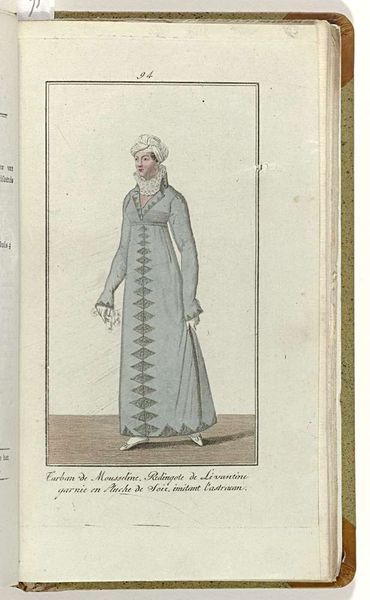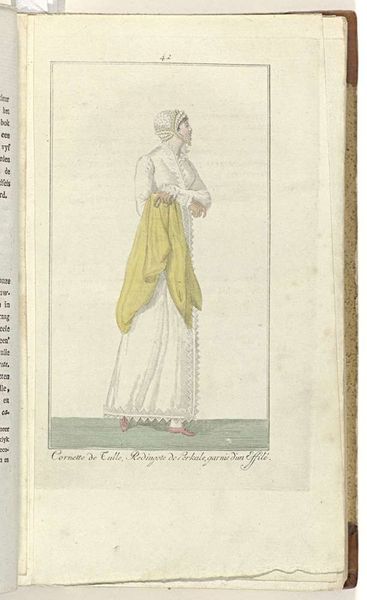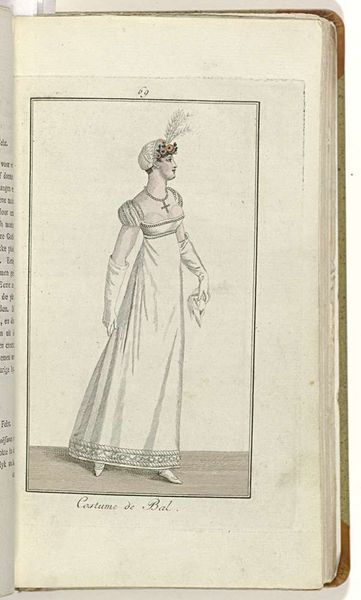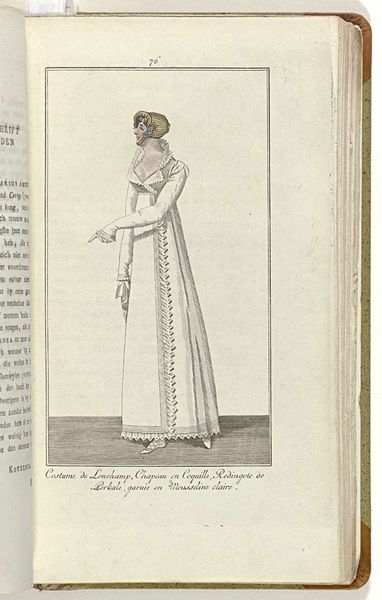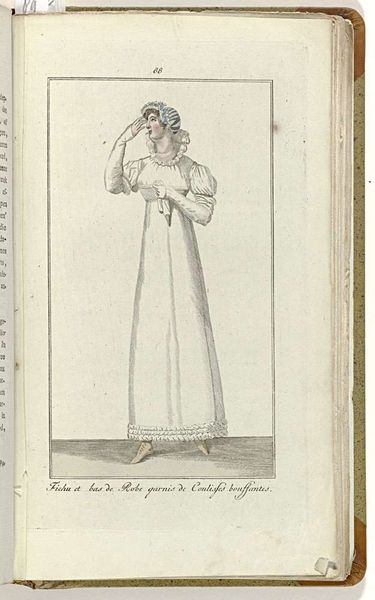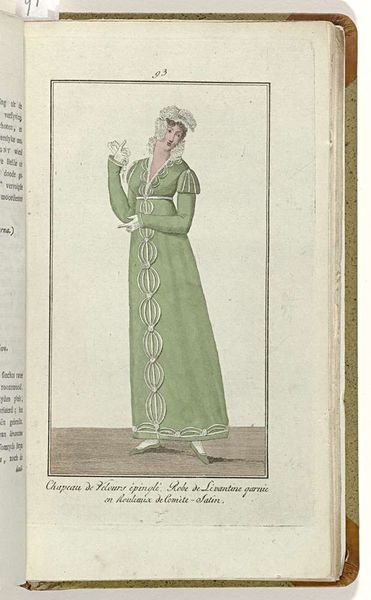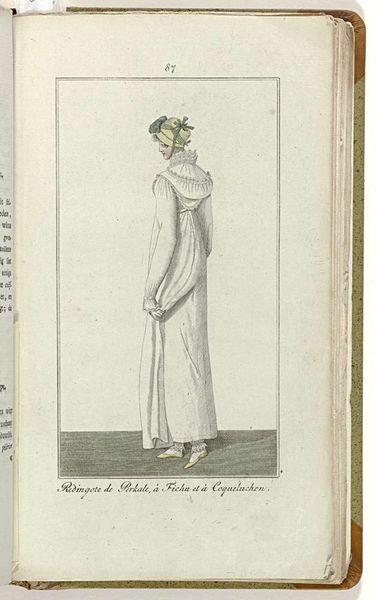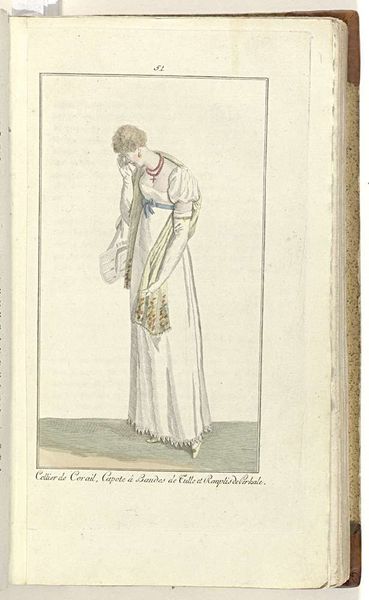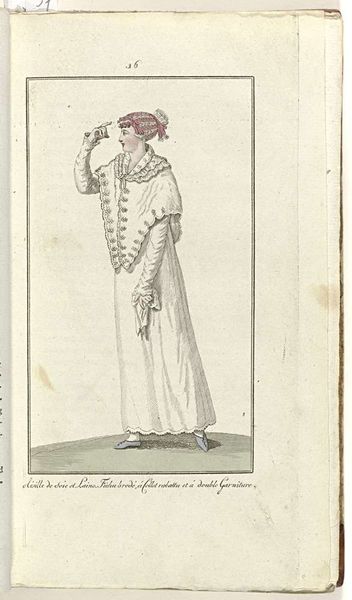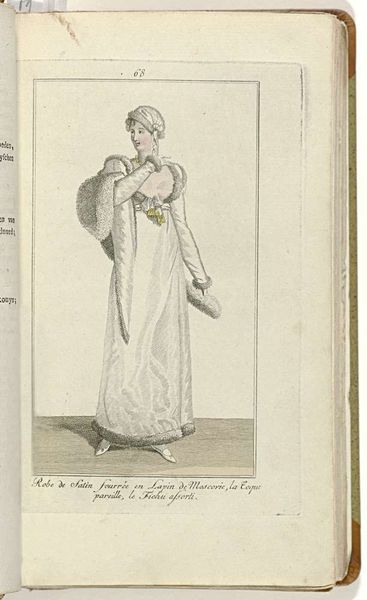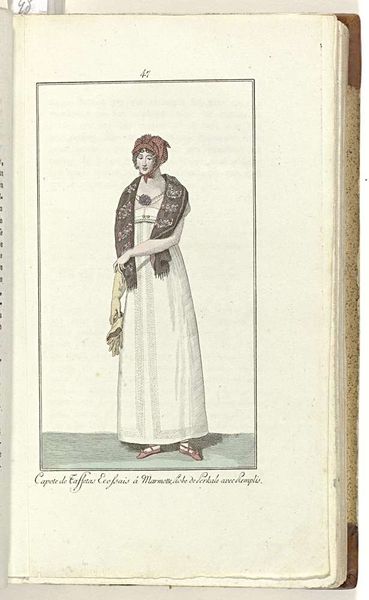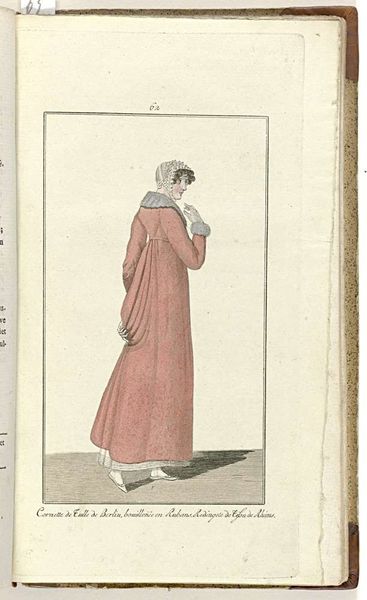
Elegantia, of tijdschrift van mode, luxe en smaak voor dames, September 1808, No. 57 : Coeffure formée de Bandes de Tulle... 1808
0:00
0:00
drawing, watercolor
#
portrait
#
drawing
#
watercolor
#
romanticism
#
watercolour illustration
#
dress
Dimensions: height 218 mm, width 120 mm
Copyright: Rijks Museum: Open Domain
Curator: Here we have a drawing, delicately rendered in watercolor, titled "Elegantia, of tijdschrift van mode, luxe en smaak voor dames, September 1808, No. 57: Coeffure formée de Bandes de Tulle..." It comes to us from 1808. Editor: Immediately, I'm struck by how completely the era is captured here. It's light, almost ephemeral, with that flowing dress and affected pose. The colors seem muted, almost dreamlike. Curator: Indeed. These fashion plates offer fascinating glimpses into the world of early 19th-century European society, particularly the rise of Romanticism and its impact on fashion and ideals of femininity. Publications like Elegantia served a vital function, shaping tastes and disseminating stylistic trends. Editor: That's very true. And within the image, observe how the dress features tiny floral patterns, representative of new aesthetic trends, but juxtaposed with her pose – head slightly tilted down, resting a delicate gloved hand on a piece of draped fabric that reads almost funereal. What sort of psychological narrative do you suppose is encoded into her visual presentation? Curator: These details surely reflect a carefully cultivated image for the discerning reader, especially among women who seek an ideal vision of femininity, while also indicating growing anxieties over revolutionary instability and economic uncertainty lurking just below the surface. That careful pose echoes anxieties about maintaining appearances in a volatile world. Editor: Right. In that era, symbols connected deeply to emotion and political turbulence, giving visual form to those sentiments. Fashion was a battlefield of sorts. The clothing design can act as social iconography. Curator: Absolutely. We have to understand that these plates didn’t merely illustrate what to wear, they also broadcasted complex messages about social standing and political leaning. How individuals chose to represent themselves visually helped construct, and perhaps control, one's narrative. Editor: I see the sitter’s almost-sepulchral appearance to signify a certain world-weariness, with an implied threat always hanging near. Looking at the semiotics, it presents a beautiful façade, but at a significant cultural and societal cost, perhaps. Curator: An apt conclusion, I believe. These fashion plates speak volumes if you know how to listen, revealing not just superficial styles but a more profound social record. Editor: It's extraordinary how one image opens up onto layers of cultural meaning when you start tracing back through the echoes of its symbolism.
Comments
No comments
Be the first to comment and join the conversation on the ultimate creative platform.
